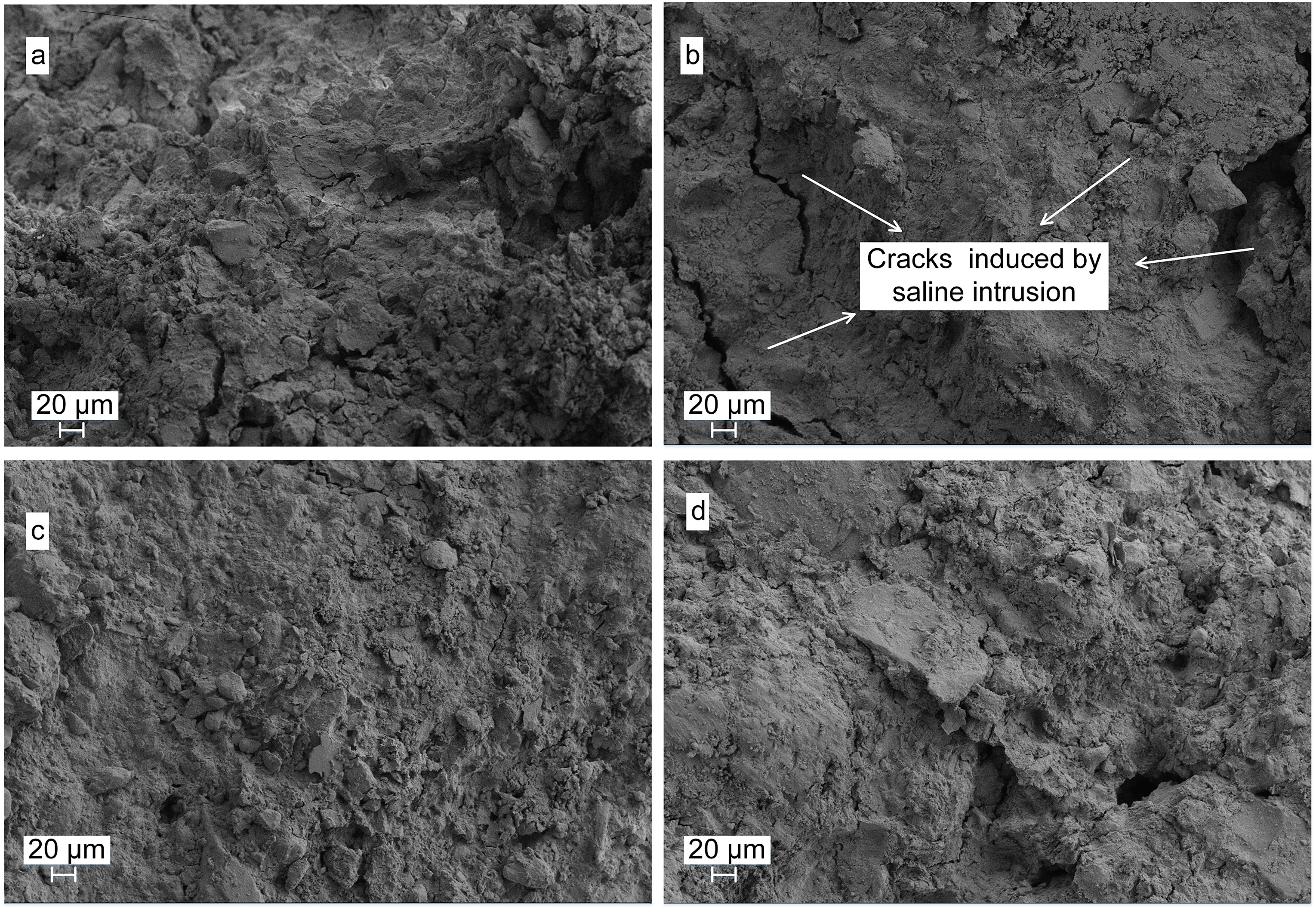JRMGE / Vol 14 / Issue 3
Structural, volumetric and water retention behaviors of a compacted clay upon saline intrusion and freeze-thaw cycles
Jianguo Lin, Weilie Zou, Zhong Han, Ziwei Zhang, Xiequn Wang
Show More
a School of Civil Engineering, Wuhan University, Wuhan, 430072, China
b Key Laboratory of Hydraulic Rock Mechanics of Ministry of Education, Wuhan University, Wuhan, 430072, China
c School of Civil Engineering and Architecture, Wuhan University of Technology, Wuhan, 430070, China
2022, 14(3): 953-966. doi:10.1016/j.jrmge.2021.12.012
Received: 2021-05-05 / Revised: 2021-08-04 / Accepted: 2021-12-02 / Available online: 2022-01-19
2022, 14(3): 953-966.
doi:10.1016/j.jrmge.2021.12.012
Received: 2021-05-05
Revised: 2021-08-04
Accepted: 2021-12-02
Available online: 2022-01-19
This study investigates the evolution of the structural, volumetric and water retention behaviors of a compacted clay during soaking and desiccation considering the influences of freeze-thaw (FT) cycles and saline intrusion. Compacted specimens were subjected to different FT cycles and then submerged in NaCl solution with different concentrations to facilitate the saline intrusion and measure the swelling behaviors. Shrinkage curve and filter paper tests were thereafter performed to reveal the clay's volumetric and water-retention characteristics during desiccation. Mercury intrusion porosimetry and field emission scanning electron microscopy tests were conducted to observe the evolution of the clay's microstructure. Experimental results show that the clay's micropores decrease and macropores increase after FT cycles, which is associated with the migration of water, growth of ice crystals, and development of FT-induced cracks during FT cycles. Similar observations were obtained from specimens after the saline intrusion, which is attributed to the osmotic and osmotically-induced consolidation. FT-induced cracks significantly reduce the clay's swelling and shrinkage potentials. FT cycles result in the shrinkage of micropores which leads to a reduction in the water retention capacity in the low suction range (capillary regime). The salinization suppresses the swelling of the clay and prolongs its primary and secondary swelling stages. The shrinkage potential initially increases and then decreases with increasing saline concentration. Salinization has significant influences on the osmotic suction and thus alters the clay's water-retention curves in terms of total suction. It demonstrates little impact on the clay's water-retention curves in terms of matric suction.
Keywords: Compacted clay, Microstructure, Volumetric behavior, Water-retention capacity, Salinization, Freeze-thaw (FT) cycles
Article Data
Author(s) Information
Weilie Zou

Weilie Zou obtained his BSc degree in Hydraulic Structure and MSc degree in Geotechnical Engineering from Wuhan University of Hydraulic and Electric Engineering, China, in 1992 and 1997, respectively, and his PhD in Geotechnical Engineering in 2004 from Wuhan University, China. He worked as engineer in Shenzhen Municipal Co. Ltd. during 1999–2000, and was employed by Wuhan University from 2000 till present. He was appointed full professor at Wuhan University in 2009, and was a Vice Dean of School of Civil Engineering, Wuhan University during 2016–2020. His research interests cover unsaturated soil mechanics, application principal of geosynthetics, laboratory testing, constitutive modeling, transportation geotechnics, lime/cement stabilized soils, etc.

